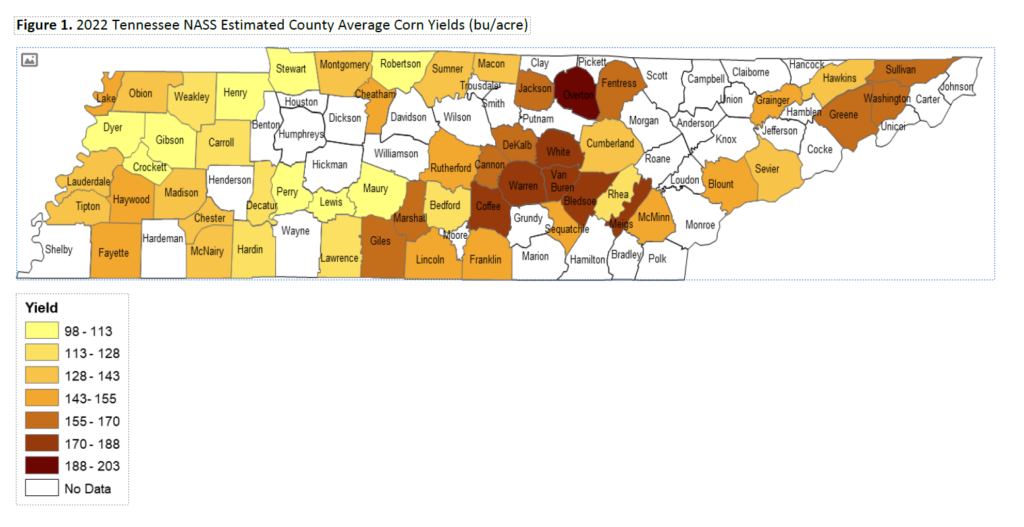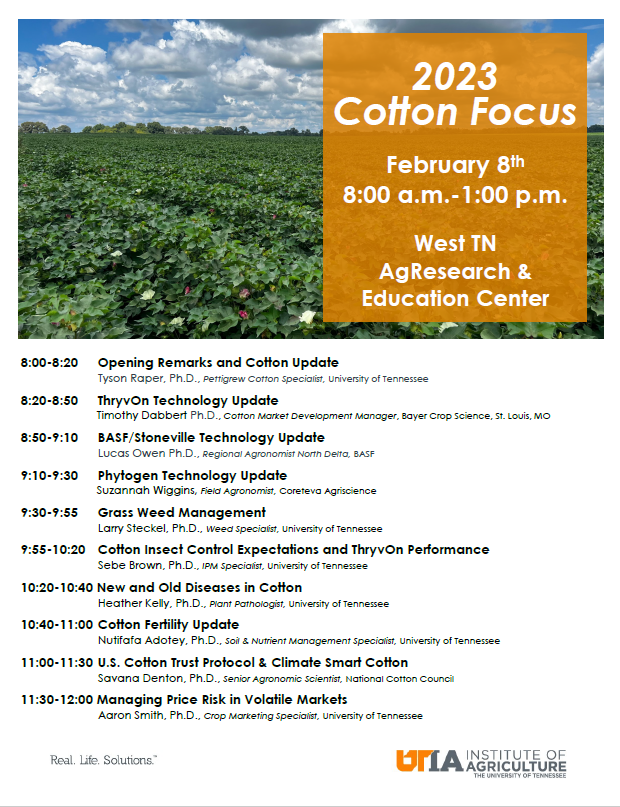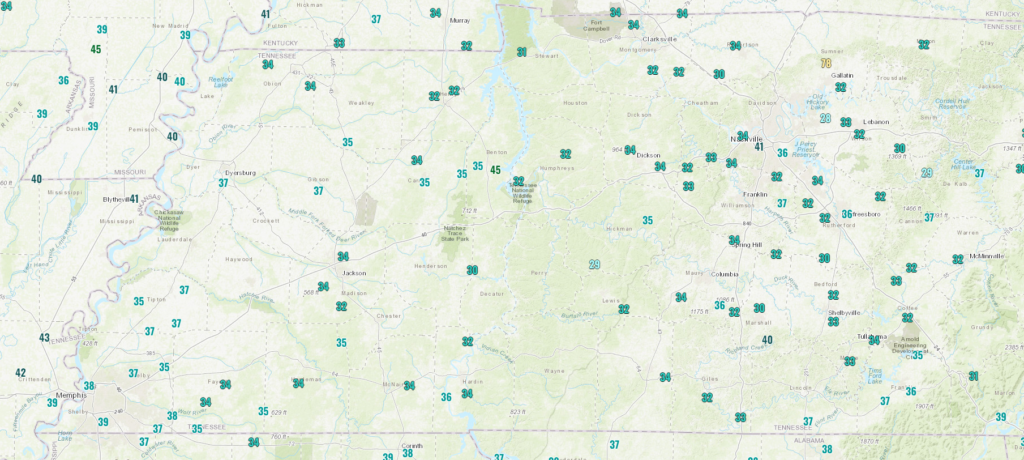 Yet another cold snap moved through the area this past weekend and several had questions concerning the possibility of this event to damage our wheat crop. I’ve pasted a copy of the NOAA observed low temperatures throughout most of Tennessee’s wheat producing areas, and as you can see from the image temperatures fell very close to dangerous levels. Additionally, frost was reported in several areas. Continue reading
Yet another cold snap moved through the area this past weekend and several had questions concerning the possibility of this event to damage our wheat crop. I’ve pasted a copy of the NOAA observed low temperatures throughout most of Tennessee’s wheat producing areas, and as you can see from the image temperatures fell very close to dangerous levels. Additionally, frost was reported in several areas. Continue reading
All posts by Tyson Raper, Cotton & Small Grains Specialist
2022 USDA NASS Estimated County Average Yields for Corn, Soybean, and Wheat in Tennessee
S. Aaron Smith, Associate Professor and Extension Crop Marketing Specialist
Beck Bowling, Extension Specialist
Department of Agricultural and Resource Economics
University of Tennessee
Below is a summary of USDA NASS Estimated County Yields for Tennessee. Data is displayed for all available counties as of March 28, 2023. Additional data can be found at:
https://quickstats.nass.usda.gov/
To view this article in PDF form with all attached figures, please click the image above. Continue reading
Assessing freeze damage to jointing wheat: what to look for and what to expect
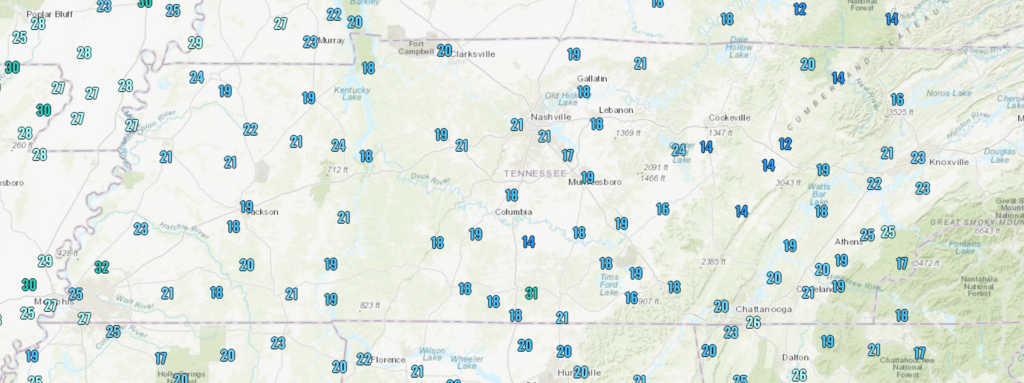
The front which moved through this past weekend (3/18-3/20) brought low temperatures down within a few degrees of records set back in 1965. Based on the growth stage and temperatures observed, I believe we will see damage in some of our wheat. In this blog article, I cover basic information on the conditions that led to the injury and how best to assess the level of injury in your wheat crop following a freeze near jointing. Continue reading
Cotton Focus is WEDNESDAY (Feb 8th); agenda now available
Cotton Focus will be held Wednesday, Feb. 8th, at the West Tennessee Research and Education Center (605 Airways Blvd, Jackson, TN 38301). The agenda has been finalized and we are very excited about our speaker line-up. Points will be provided and the event will conclude with lunch from Tulum.
Additionally, the annual meeting of the Tennessee Boll Weevil Eradication Foundation (TBWEF) will be held after lunch in Room 127 of the West Tennessee Ag Research & Education Center at Jackson. All producers are invited to attend.
Looking forward to seeing each of you there!
2023 Cotton Focus on Wednesday, Feb 8th
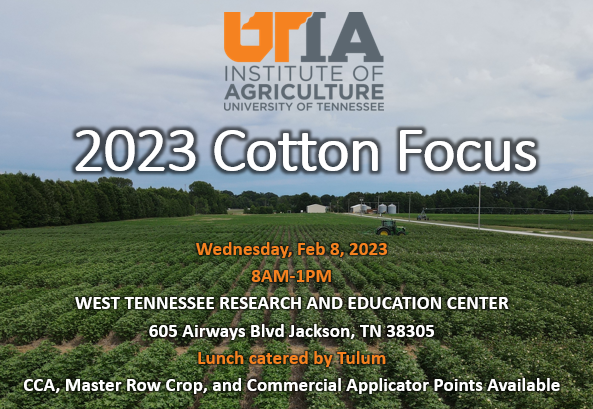
The 2023 University of Tennessee Cotton Focus is coming up on February 8th from 8AM to 1PM in Jackson, TN at the West Tennessee Research and Education Center (605 Airways Blvd Jackson, TN 38301). Lunch will be provided and CCA, Commercial Applicator and Master Row Crop Points will be available. Tulum will be catering lunch.
We have several excellent guest speakers that will provide very valuable insight into several important decisions that we will have to make during 2023. Additionally, we have several industry updates that you will not want to miss. We look forward to seeing you there!
2022 Tennessee Cotton Variety Trial Results Publication (PB 1742) now available online
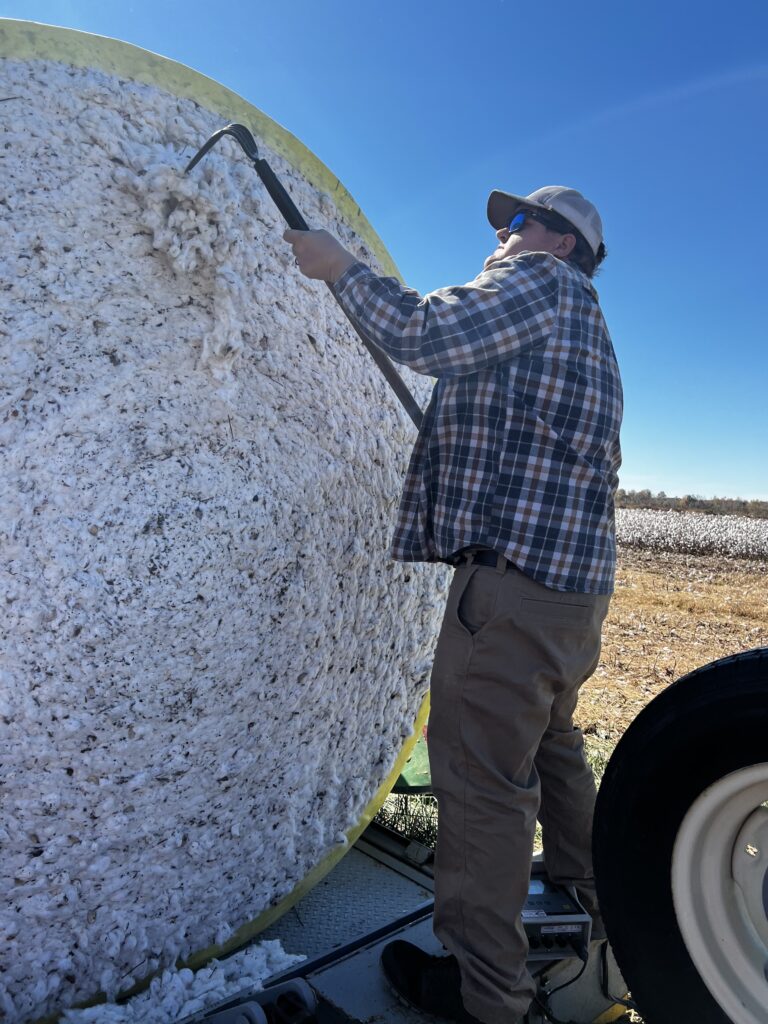 The 2022 Tennessee Cotton Variety Trial Results Publication (PB 1742) is now available online. Included within these results are ten large strip trials (CSTs) testing 13 XtendFlex commercial varieties, four large strip trials (CSTs) testing 6 Enlist commercial varieties, and six small plot trials (OVTs) testing 40 experimental and commercial varieties.
The 2022 Tennessee Cotton Variety Trial Results Publication (PB 1742) is now available online. Included within these results are ten large strip trials (CSTs) testing 13 XtendFlex commercial varieties, four large strip trials (CSTs) testing 6 Enlist commercial varieties, and six small plot trials (OVTs) testing 40 experimental and commercial varieties.
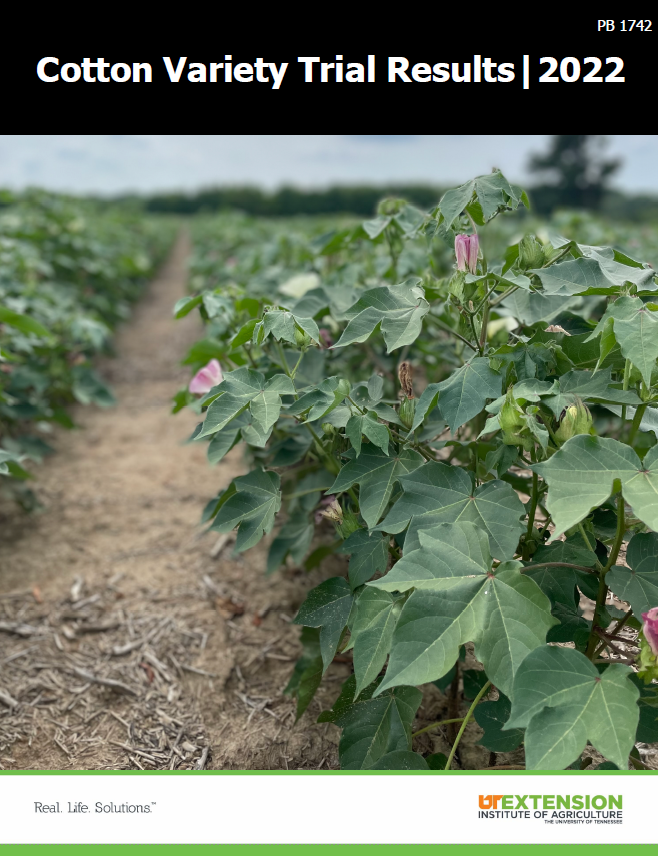
Special thanks to all of the agents and producers who helped generate this data. Additionally, thanks to the USDA Classing Office in Memphis for assisting with this effort. If you have any questions on location response or variety placement, please do not hesitate to reach out directly to your county agent.
Preliminary Tennessee Official Cotton Variety Trials’ yield and turnout now available
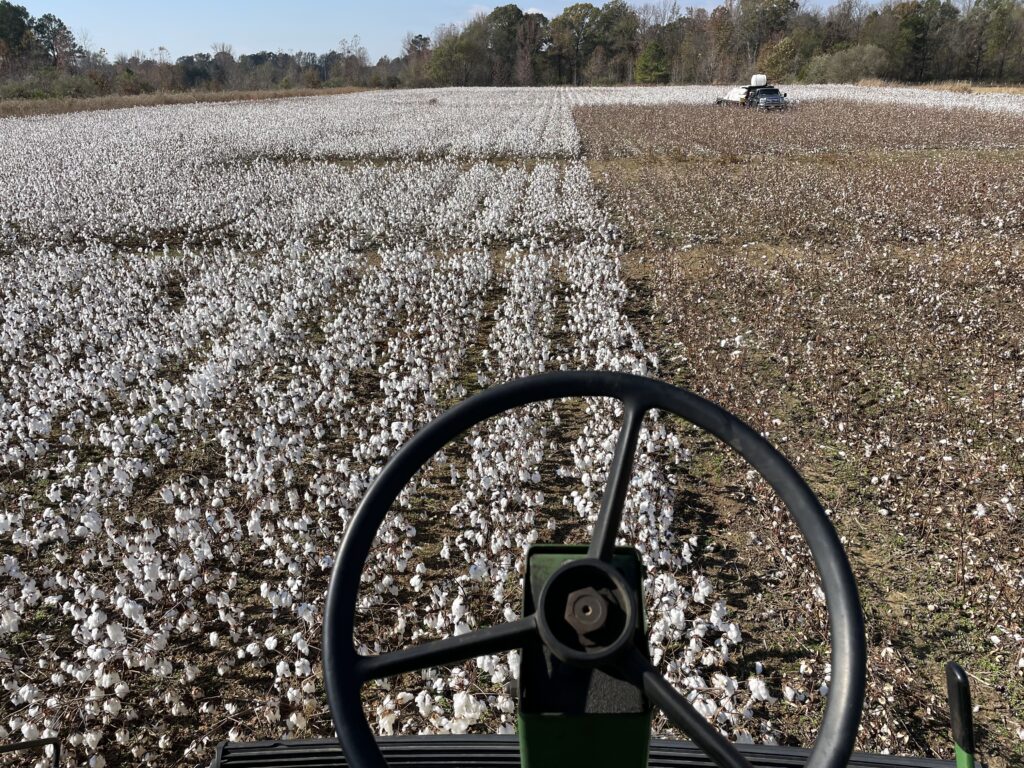 We have finished ginning all collected Official Variety Trial samples and I expect to have the remaining fiber quality data back from the USDA Classing Office in Memphis any minute now. We are on track to have the complete results from both the Official Variety Trials and the County Standard Trials weeks earlier than normal. Still, I wanted to share some of the preliminary results with you now. Continue reading
We have finished ginning all collected Official Variety Trial samples and I expect to have the remaining fiber quality data back from the USDA Classing Office in Memphis any minute now. We are on track to have the complete results from both the Official Variety Trials and the County Standard Trials weeks earlier than normal. Still, I wanted to share some of the preliminary results with you now. Continue reading
What to expect as temps drop into the 30s, boll opening and boll maturity hereon
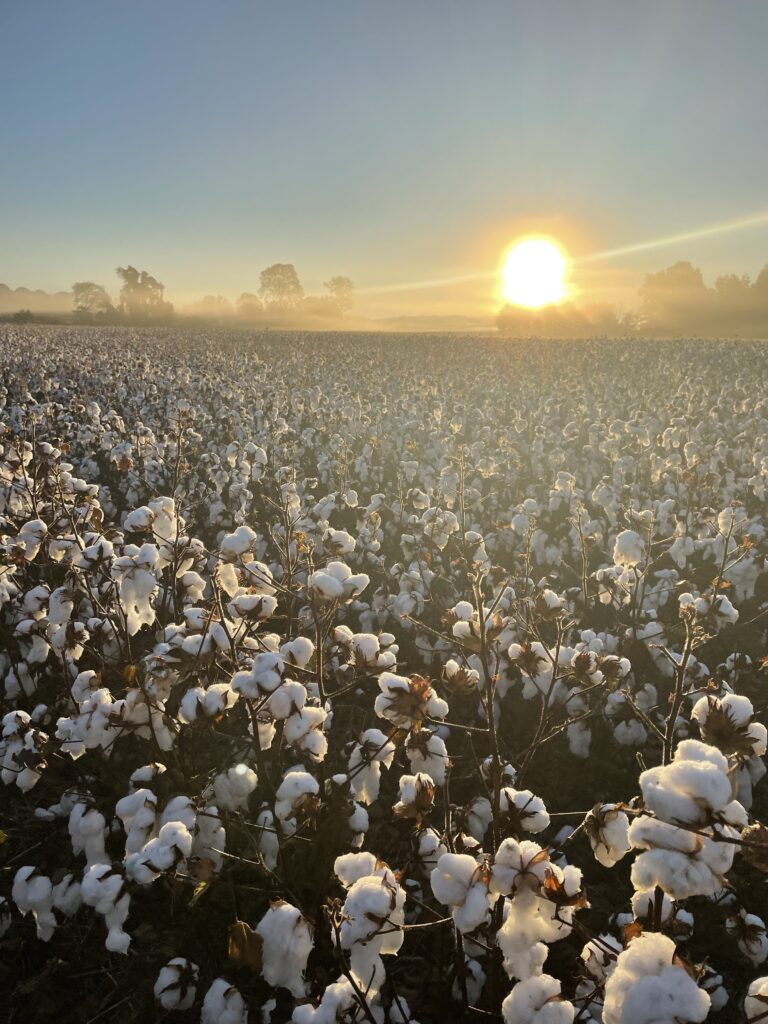 Conversations this week have centered on the forecast lows over the coming weekend, boll maturation at temperatures averaging below 60F, and slow activity of defoliants and boll openers. In this blog, I briefly tackle each of these issues. Continue reading
Conversations this week have centered on the forecast lows over the coming weekend, boll maturation at temperatures averaging below 60F, and slow activity of defoliants and boll openers. In this blog, I briefly tackle each of these issues. Continue reading

